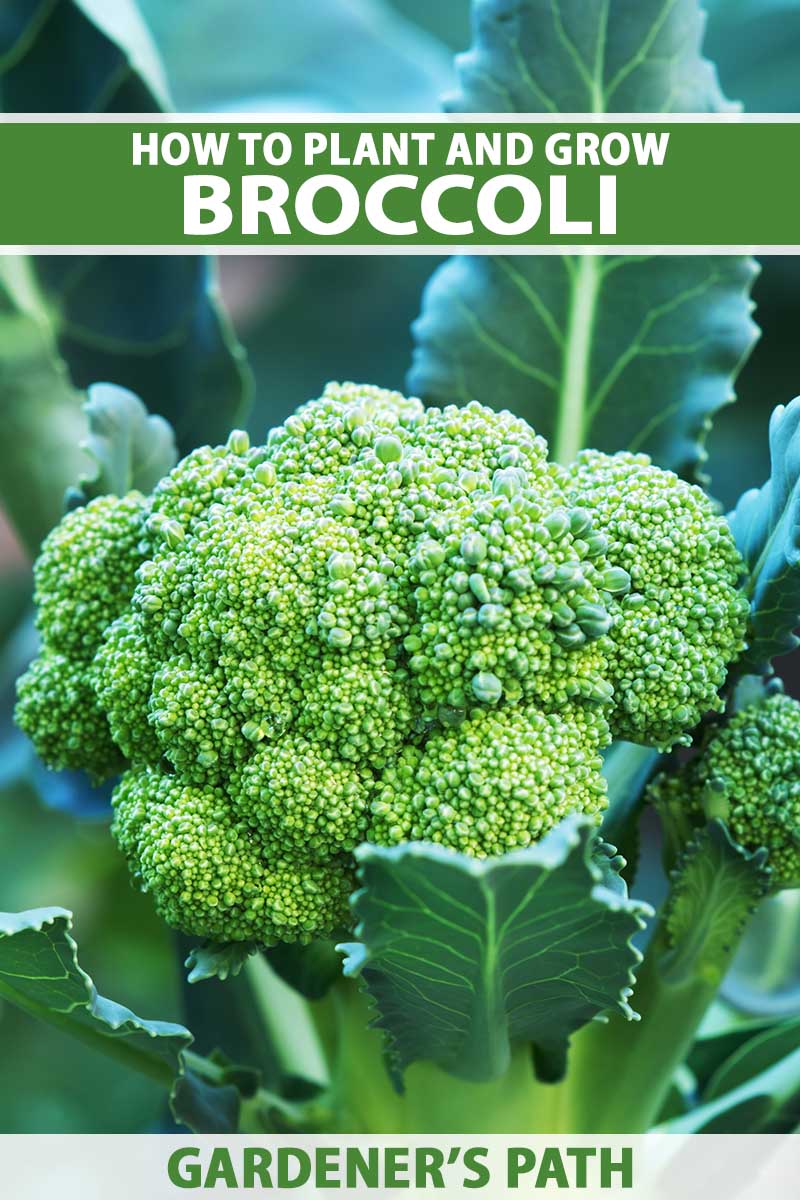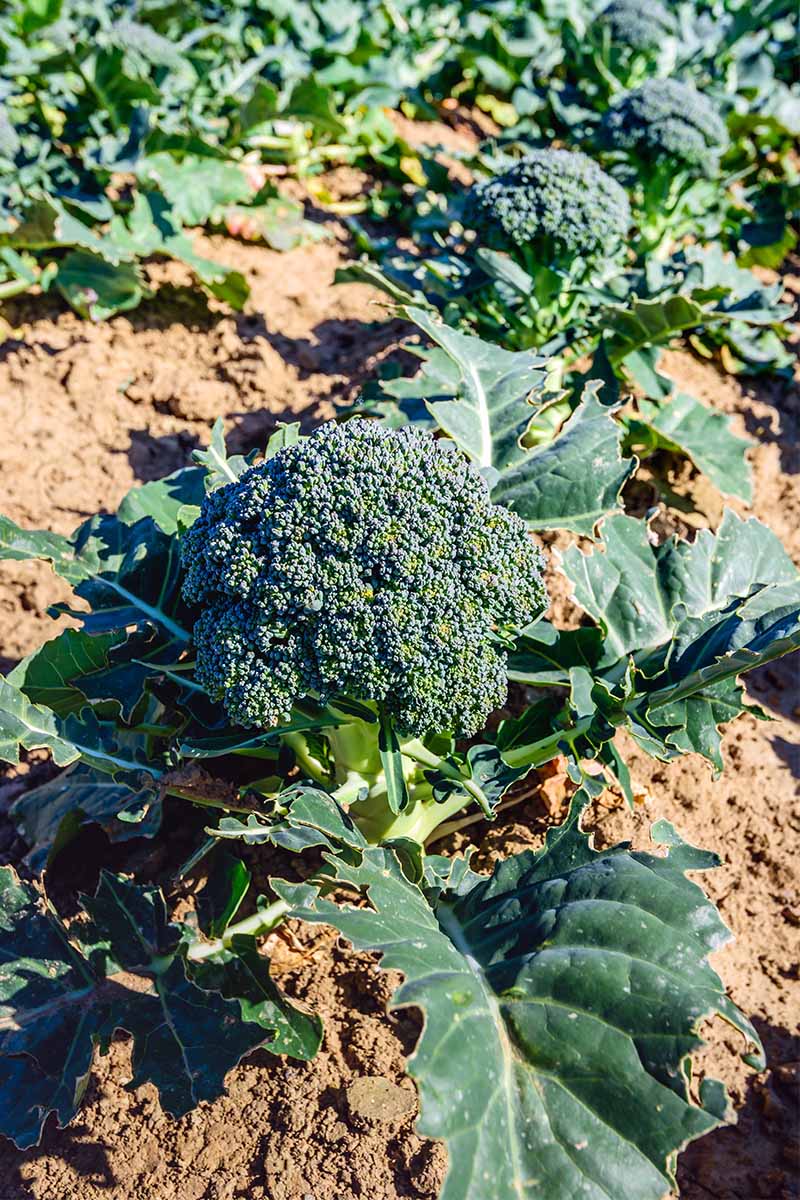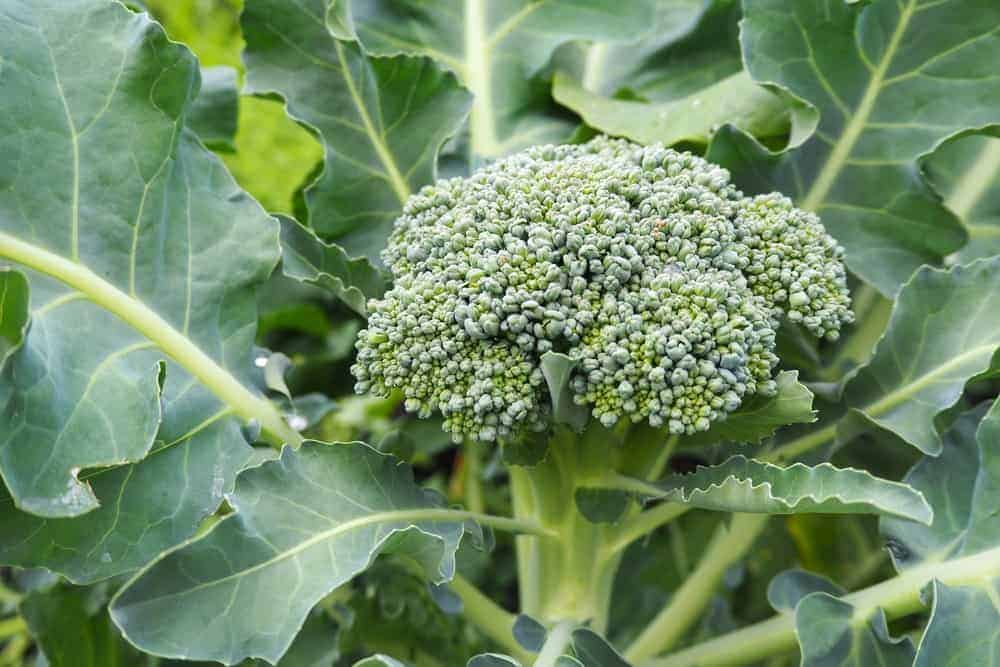Understanding the Basics of Broccoli Planting
Broccoli is a cool-season crop that requires careful planning and attention to detail to thrive. One of the most critical factors in broccoli cultivation is proper spacing. Planting broccoli too close together can lead to reduced air circulation, increased disease susceptibility, and decreased yields. On the other hand, planting broccoli too far apart can result in wasted space and reduced overall productivity. To achieve optimal growth and maximize yields, it’s essential to understand the basics of broccoli planting, including the importance of proper spacing.
When planting broccoli, it’s crucial to consider the mature size of the plants and the space required for healthy growth. Broccoli plants can grow quite large, with some varieties reaching up to 3 feet in diameter. To accommodate this growth, broccoli plants should be spaced at least 18 to 24 inches apart, with rows spaced 3 to 4 feet apart. This allows for adequate air circulation, sunlight penetration, and access for maintenance and harvesting.
In addition to proper spacing, broccoli plants also require well-draining, fertile soil with a pH between 6.0 and 7.0. The soil should be rich in organic matter and have adequate nutrients to support healthy growth. By providing the right conditions and spacing, broccoli plants can thrive and produce high-quality florets.
Throughout this article, we’ll delve into the specifics of broccoli planting, including how to choose the right variety, prepare the soil, and plant broccoli correctly. We’ll also discuss common mistakes to avoid and provide tips for growing healthy and productive broccoli plants. By the end of this article, you’ll have a comprehensive understanding of how to plant broccoli and maximize your yields.
Choosing the Right Variety of Broccoli for Your Garden
With over 100 varieties of broccoli to choose from, selecting the right one for your garden can be a daunting task. Each variety has its unique characteristics, growth habits, and space requirements, making it essential to choose a variety that suits your specific climate and garden conditions. When selecting a broccoli variety, consider factors such as maturity days, plant size, and disease resistance.
Some popular broccoli varieties include ‘Deep Purple’, ‘Waltham 29’, and ‘Calabrese’. ‘Deep Purple’ is a hybrid variety that produces deep purple florets and is resistant to powdery mildew. ‘Waltham 29’ is a popular open-pollinated variety that produces large, green florets and is suitable for cooler climates. ‘Calabrese’ is a Italian variety that produces small, tender florets and is ideal for small gardens.
When choosing a broccoli variety, also consider the space requirements. Some varieties, such as ‘Romanesco’, require more space than others due to their larger plant size. On the other hand, varieties like ‘Broccolini’ are compact and can be grown in smaller spaces. By selecting a variety that suits your garden conditions and space requirements, you can ensure a healthy and productive broccoli crop.
In addition to variety selection, it’s also essential to consider the specific growing conditions for broccoli. Broccoli prefers full sun, well-draining soil, and a cool climate. By providing the right growing conditions and selecting the right variety, you can enjoy a bountiful harvest of delicious and nutritious broccoli.
When planting broccoli, it’s also important to consider the spacing between plants. The ideal spacing for broccoli plants is between 18 and 24 inches apart, with rows spaced 3 to 4 feet apart. This allows for adequate air circulation, sunlight penetration, and access for maintenance and harvesting. By following these guidelines, you can ensure a healthy and productive broccoli crop.
Preparing the Soil for Optimal Broccoli Growth
Broccoli is a cool-season crop that requires a well-draining, fertile soil to thrive. The ideal soil pH for broccoli is between 6.0 and 7.0, with a slightly acidic to neutral soil pH being optimal. To achieve this, it’s essential to test the soil pH and amend it if necessary. A soil test can be done using a DIY kit or by sending a sample to a laboratory for analysis.
Once the soil pH is determined, it’s essential to add organic matter to improve soil structure and fertility. Compost, well-rotted manure, or peat moss can be added to the soil to increase its water-holding capacity, aeration, and nutrient availability. A 2-inch layer of compost or well-rotted manure can be incorporated into the top 6-8 inches of soil to create a fertile and well-draining growing medium.
In addition to pH and organic matter, broccoli also requires adequate nutrients to grow. A balanced fertilizer with a ratio of 10-10-10 (nitrogen-phosphorus-potassium) can be applied according to the manufacturer’s instructions. It’s also essential to ensure that the soil has adequate calcium and magnesium, as these nutrients are essential for broccoli growth.
Proper drainage is also crucial for broccoli growth. Broccoli is susceptible to root rot and other diseases if the soil is waterlogged. To ensure good drainage, the soil can be raised by 2-3 inches using a mixture of topsoil, compost, and perlite or vermiculite. This will help to prevent water from accumulating in the soil and reduce the risk of disease.
By preparing the soil correctly, broccoli plants can thrive and produce high-quality florets. A well-draining, fertile soil with a balanced pH and adequate nutrients is essential for optimal broccoli growth. By following these tips, gardeners can create an ideal growing environment for broccoli and enjoy a bountiful harvest.
How to Plant Broccoli: A Step-by-Step Guide
Planting broccoli requires careful attention to detail to ensure a healthy and productive crop. Here is a step-by-step guide on how to plant broccoli:
Step 1: Prepare the Soil
Before planting broccoli, make sure the soil is well-draining and fertile. Add organic matter such as compost or well-rotted manure to improve soil structure and fertility.
Step 2: Sow Broccoli Seeds
Sow broccoli seeds 1-2 inches deep and 2-3 inches apart in rows that are 3-4 feet apart. Cover the seeds with a thin layer of soil and water gently.
Step 3: Thin Seedlings
Once the seedlings emerge, thin them to 12-18 inches apart to allow for proper growth and air circulation.
Step 4: Plant Broccoli Seedlings
If you are using broccoli seedlings, plant them 12-18 inches apart in rows that are 3-4 feet apart. Dig a hole that is the same depth as the pot and twice as wide. Gently remove the seedling from the pot and place it in the hole. Fill the hole with soil and water gently.
Step 5: Water and Mulch
Water the broccoli plants regularly, providing about 1-2 inches of water per week. Mulch around the plants to retain moisture and suppress weeds.
Step 6: Fertilize
Fertilize the broccoli plants regularly, using a balanced fertilizer that is high in nitrogen, phosphorus, and potassium.
By following these steps, you can ensure a healthy and productive broccoli crop. Remember to plant broccoli at the right time for your climate and to provide the right growing conditions for optimal growth.
Here is an illustration of the broccoli planting process:
[Insert illustration or diagram]
Broccoli Plant Spacing: How Far Apart to Plant for Maximum Yields
Proper spacing is crucial when planting broccoli to ensure healthy growth, prevent disease, and maximize yields. The ideal spacing for broccoli plants depends on the variety, growth habits, and climate. Here are some general guidelines for broccoli plant spacing:
For compact varieties, such as ‘Deep Purple’ or ‘Waltham 29’, plant broccoli 12-18 inches apart in rows that are 2-3 feet apart. For larger varieties, such as ‘Calabrese’ or ‘Romanesco’, plant broccoli 18-24 inches apart in rows that are 3-4 feet apart.
It’s also important to consider the mature size of the broccoli plants when determining spacing. Broccoli plants can grow quite large, with some varieties reaching up to 3 feet in diameter. To ensure proper air circulation and sunlight penetration, it’s essential to provide enough space between plants.
To calculate the optimal spacing for your broccoli plants, consider the following factors:
1. Variety: Different broccoli varieties have different growth habits and space requirements. Compact varieties require less space than larger varieties.
2. Climate: Broccoli plants grown in cooler climates may require more space than those grown in warmer climates.
3. Soil quality: Broccoli plants grown in poor soil may require more space than those grown in rich, fertile soil.
By considering these factors and providing the right spacing, you can ensure a healthy and productive broccoli crop. Remember to plant broccoli at the right time for your climate and to provide the right growing conditions for optimal growth.
Here is a rough estimate of the spacing requirements for different broccoli varieties:
| Variety | Spacing between plants | Spacing between rows |
| — | — | — |
| Compact varieties | 12-18 inches | 2-3 feet |
| Large varieties | 18-24 inches | 3-4 feet |
Keep in mind that these are general guidelines, and the specific spacing requirements may vary depending on your climate and soil conditions.
Common Mistakes to Avoid When Planting Broccoli
When planting broccoli, it’s essential to avoid common mistakes that can lead to poor growth, reduced yields, and increased susceptibility to disease. Here are some common mistakes to avoid when planting broccoli:
1. Overcrowding: Planting broccoli too close together can lead to reduced air circulation, increased competition for water and nutrients, and increased susceptibility to disease. Make sure to provide enough space between plants, depending on the variety and growth habits.
2. Under-spacing: On the other hand, planting broccoli too far apart can result in wasted space and reduced yields. Make sure to plant broccoli at the correct spacing to maximize yields and reduce waste.
3. Poor soil preparation: Broccoli requires well-draining, fertile soil to grow. Make sure to test and amend the soil to create an ideal growing environment. Avoid planting broccoli in soil that is too dense, too dry, or too wet.
4. Incorrect planting depth: Planting broccoli too deep or too shallow can lead to poor growth and reduced yields. Make sure to plant broccoli at the correct depth, depending on the variety and growth habits.
5. Inadequate watering: Broccoli requires consistent moisture to grow. Make sure to water broccoli regularly, but avoid overwatering, which can lead to root rot and other problems.
6. Lack of fertilization: Broccoli requires regular fertilization to grow. Make sure to fertilize broccoli regularly, using a balanced fertilizer that is high in nitrogen, phosphorus, and potassium.
7. Poor pest management: Broccoli is susceptible to pests such as aphids, whiteflies, and spider mites. Make sure to monitor broccoli regularly for pests and use organic or integrated pest management methods to control infestations.
By avoiding these common mistakes, you can ensure a healthy and productive broccoli crop. Remember to plant broccoli at the right time for your climate and to provide the right growing conditions for optimal growth.
Here are some tips for troubleshooting and correcting common mistakes when planting broccoli:
1. Monitor broccoli regularly for signs of stress, disease, or pests.
2. Adjust watering and fertilization schedules as needed.
3. Prune or train broccoli plants to promote healthy growth and maximize yields.
4. Use organic or integrated pest management methods to control infestations.
5. Keep records of planting dates, weather patterns, and pest management activities to improve future broccoli crops.
Tips for Growing Healthy and Productive Broccoli Plants
Broccoli is a cool-season crop that requires regular care and attention to grow healthy and productive plants. Here are some additional tips and advice on how to grow healthy and productive broccoli plants:
1. Regular Watering: Broccoli requires consistent moisture to grow. Make sure to water broccoli plants regularly, but avoid overwatering, which can lead to root rot and other problems.
2. Fertilization: Broccoli requires regular fertilization to grow. Use a balanced fertilizer that is high in nitrogen, phosphorus, and potassium. Avoid overfertilizing, which can lead to weak and leggy growth.
3. Pest Management: Broccoli is susceptible to pests such as aphids, whiteflies, and spider mites. Use organic or integrated pest management methods to control infestations. Avoid using chemical pesticides, which can harm beneficial insects and the environment.
4. Pruning and Training: Broccoli plants require regular pruning and training to promote healthy growth and maximize yields. Remove any weak or damaged leaves or stems, and train the plants to grow upright using stakes or trellises.
5. Crop Rotation: Broccoli is a member of the Brassica family, which includes other crops such as cauliflower, kale, and cabbage. Rotate broccoli with other crops to avoid depleting the soil of nutrients and to reduce the risk of pests and diseases.
6. Soil Health: Broccoli requires well-draining, fertile soil to grow. Test the soil regularly to determine its pH level and nutrient content. Amend the soil as necessary to create an ideal growing environment.
7. Climate and Weather: Broccoli is a cool-season crop that prefers cooler temperatures and moderate humidity. Avoid planting broccoli in areas with extreme temperatures, drought, or excessive rainfall.
By following these tips and advice, you can grow healthy and productive broccoli plants that will provide you with a bountiful harvest. Remember to plant broccoli at the right time for your climate and to provide the right growing conditions for optimal growth.
Here are some additional resources that can help you grow healthy and productive broccoli plants:
[Insert additional resources, such as books, articles, or websites]
Conclusion: Mastering the Art of Broccoli Planting
Mastering the art of broccoli planting requires attention to detail, patience, and practice. By following the tips and techniques outlined in this article, you can grow healthy and productive broccoli plants that will provide you with a bountiful harvest. Remember to plant broccoli at the right time for your climate, provide the right growing conditions, and care for your plants regularly.
Proper spacing is crucial when planting broccoli, as it allows for healthy growth, disease prevention, and maximizes yields. Choose the right variety of broccoli for your garden, prepare the soil for optimal growth, and plant broccoli correctly using the step-by-step guide provided.
By avoiding common mistakes such as overcrowding, under-spacing, and poor soil preparation, you can ensure a healthy and productive broccoli crop. Regular watering, fertilization, and pest management are also essential for growing healthy and productive broccoli plants.
In conclusion, planting broccoli is a rewarding experience that requires attention to detail and care. By following the tips and techniques outlined in this article, you can master the art of broccoli planting and enjoy a bountiful harvest of delicious and nutritious broccoli.
So, go ahead and give broccoli planting a try With the right techniques and care, you’ll be enjoying a delicious and healthy harvest in no time.








